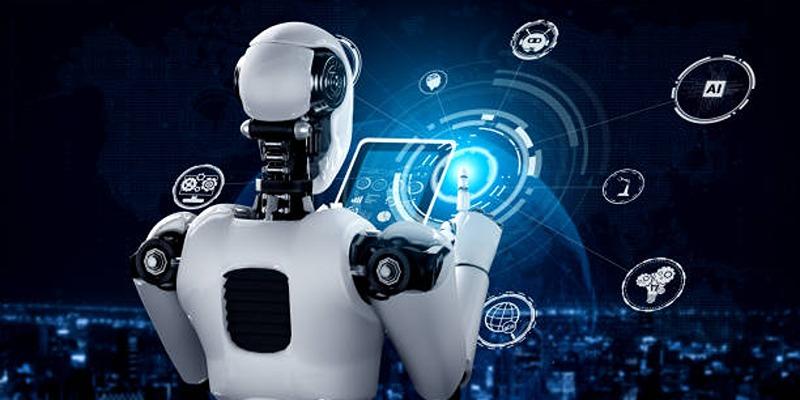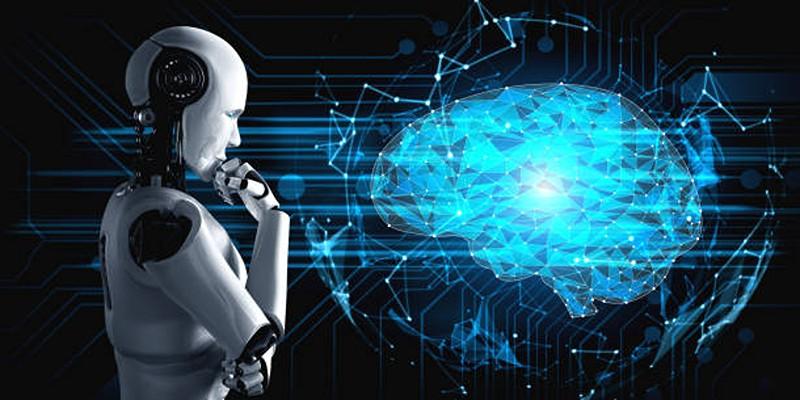Artificial Intelligence has come a long way from being a concept in science fiction to a reality in our everyday lives. ChatGPT is a key example, showing how technology can interact with humans naturally. This progress in AI not only helps people solve problems faster but also brings us closer to the dreams once imagined in stories.
The Evolution of AI Communication:
The origins of AI-driven communication trace back to early computational theories. Alan Turing who remains the widely recognized figure in computer science field established the Turing Test as a breakthrough evaluation method for machine involvement in mimicking human intelligence during 1950. The initial basic approaches to build conversational AI systems during primitive times developed into the contemporary innovations we observe.
Early AI Programs: ELIZA and PARRY:
- During the 1960s and 1970s, groundbreaking programs like ELIZA and PARRY demonstrated the potential of artificial intelligence to mimic human conversation, marking a pivotal moment in AI's evolution.
- Joseph Weizenbaum developed ELIZA in 1966 to behave as a psychotherapist by using simple pattern-matching rules which developed artificial dialogue. During the early 1970s Kenneth Colby developed PARRY by implementing advanced rules to produce human-like reasoning patterns while paying attention to the symptoms of paranoid schizophrenia.
- Both systems relied heavily on pre-defined scripts and rule-based logic, limiting their ability to respond beyond their programmed parameters.
- They lacked contextual understanding, learning capabilities, and adaptability—key features that distinguish them from modern AI.
- Despite these limitations, ELIZA and PARRY were significant milestones in the development of conversational AI, paving the way for advancements in natural language processing and inspiring future innovations.
The Rise of Machine Learning and Neural Networks:
The 21st century brought a transformative wave in AI, fueled by the advent of machine learning and neural networks. With the ability to process massive datasets and recognize patterns, AI systems began advancing at an unprecedented pace. The rise of deep learning models, including recurrent neural networks (RNNs) and transformers, revolutionized the field. These technologies enabled the creation of sophisticated language models capable of not only understanding but also generating human-like text with remarkable accuracy.
The Rise of ChatGPT:

1. Introduction to ChatGPT
ChatGPT, developed by OpenAI, represents a transformative advancement in artificial intelligence and natural language processing. Built on the cutting-edge GPT (Generative Pre-trained Transformer) architecture, this AI model harnesses vast datasets and sophisticated deep learning techniques to produce responses that are both coherent and contextually precise.
By analyzing and predicting language patterns, ChatGPT excels at engaging in meaningful conversations, assisting with creative writing, answering complex questions, and generating ideas for brainstorming. Its adaptability and versatility make it an invaluable tool for businesses, educators, and everyday users, empowering them to tackle a wide variety of tasks with ease and efficiency.
2. How Does ChatGPT Differ from Traditional AI Systems?
Unlike traditional AI systems bound by rigid scripts and predefined rules, ChatGPT is powered by advanced training on diverse text data, enabling it to deliver highly adaptive, context-aware responses.
- Effortlessly handles a wide range of conversational scenarios, from answering questions and providing explanations to engaging in casual dialogue.
- Delivers natural, human-like interactions for a seamless and engaging user experience.
- Demonstrates a sophisticated understanding of context, setting it apart from conventional AI models.
- Serves as a versatile and powerful communication tool.
3. Key Features of ChatGPT
What sets ChatGPT apart is its remarkable ability to grasp and respond to nuanced queries. From tackling complex questions and generating creative writing prompts to assisting with technical tasks, its versatility redefines the possibilities of AI-driven communication.
4. How ChatGPT is Transforming Industries?
ChatGPT's versatility has positioned it as a valuable asset across numerous industries, including:
- Customer Service: Enhancing support by efficiently addressing inquiries, resolving issues, and fostering strong customer relationships.
- Education: Assisting with teaching, mentoring, and training to help individuals develop new skills and expand their knowledge for personal or professional advancement.
- Content Creation: Producing compelling written, visual, and multimedia content that informs, entertains, and inspires audiences.
- Software Development: Streamlining the design, coding, and maintenance of software applications to deliver seamless and improved user experiences.
5. Shaping the Future of AI
By bridging the gap between utility and natural dialogue, ChatGPT is shaping the future of AI. It offers unparalleled support and innovation across countless fields, redefining how we interact with technology.
The Influence of Conversational AI:
Transforming Customer Service:
Conversational AI, like ChatGPT, is reshaping customer service by enabling AI-powered chatbots to handle a wide range of inquiries. This reduces the need for human intervention, improves response times, and enhances customer satisfaction, allowing companies to focus on other critical areas.
Revolutionizing Education:
In education, ChatGPT acts as a personalized learning assistant. It helps students with homework, simplifies complex concepts, and generates tailored practice questions. With instant feedback and adaptability to unique learning styles, it’s a game-changer for students and educators alike.
Streamlining Content Creation:
Content creators are leveraging conversational AI to boost productivity. From brainstorming ideas and drafting articles to editing, ChatGPT aids the creative process. While it doesn’t replace human creativity, it serves as a valuable collaborator, letting creators focus on strategic, high-level tasks.
Driving Change Across Industries:
Conversational AI is more than just a technological innovation. It’s a catalyst for change, unlocking new possibilities and transforming the way we work and learn across multiple sectors.
Ethical Considerations and Challenges:

1. Misuse of Conversational AI
- AI-generated content can be misused to spread misinformation or create deceptive narratives.
- This undermines public trust and safety.
- Robust safeguards and clear ethical guidelines are essential for responsible adoption.
2. Bias in AI Models
AI models like ChatGPT are trained on large datasets that may contain biased or discriminatory content. This can lead to the unintentional generation of prejudiced responses and reinforcement of harmful stereotypes. Addressing this issue requires:
- Ongoing efforts to improve data quality.
- Integration of fairness principles into AI development.
3. Privacy Concerns
- Conversational AI systems often handle sensitive user information.
- This raises concerns about data security and informed consent.
- Balancing functionality and privacy is critical to fostering trust and ensuring responsible AI growth.
Conclusion:
The rise of AI-powered interactions, exemplified by ChatGPT, marks a transformative leap in bringing science fiction to life. What was once confined to the imagination is now redefining how we communicate, learn, and create. As AI capabilities continue to evolve, it is crucial to address the ethical and societal challenges they present, ensuring their development remains responsible, fair, and inclusive.
